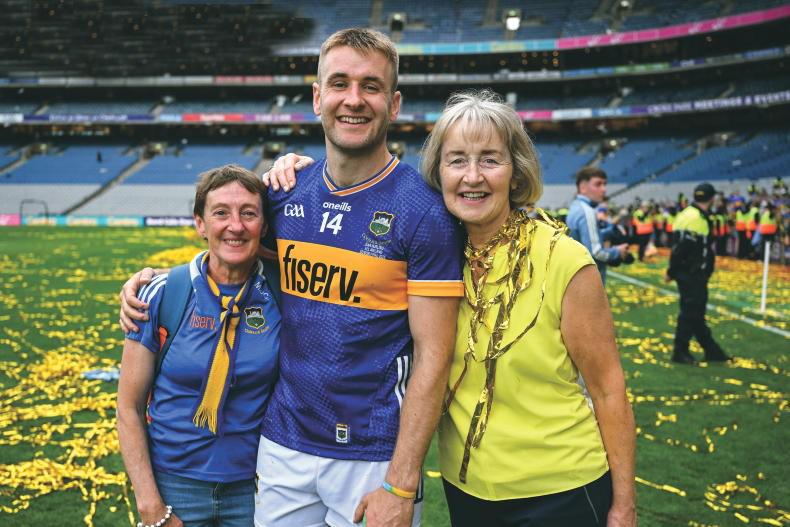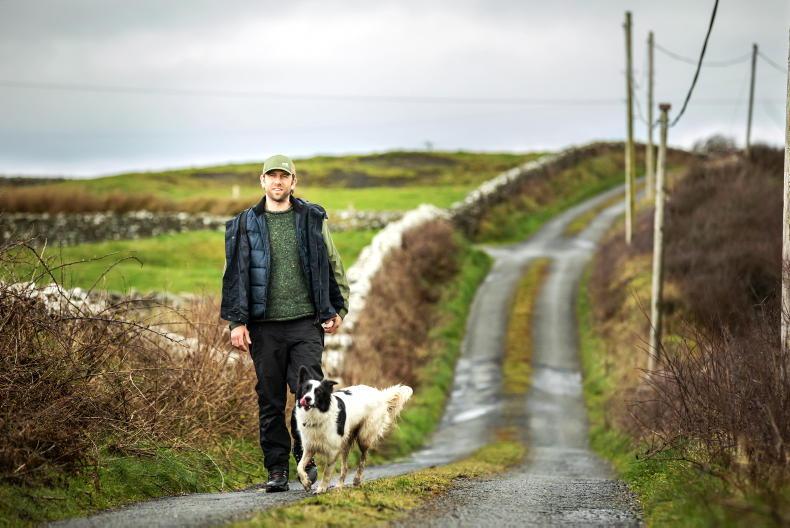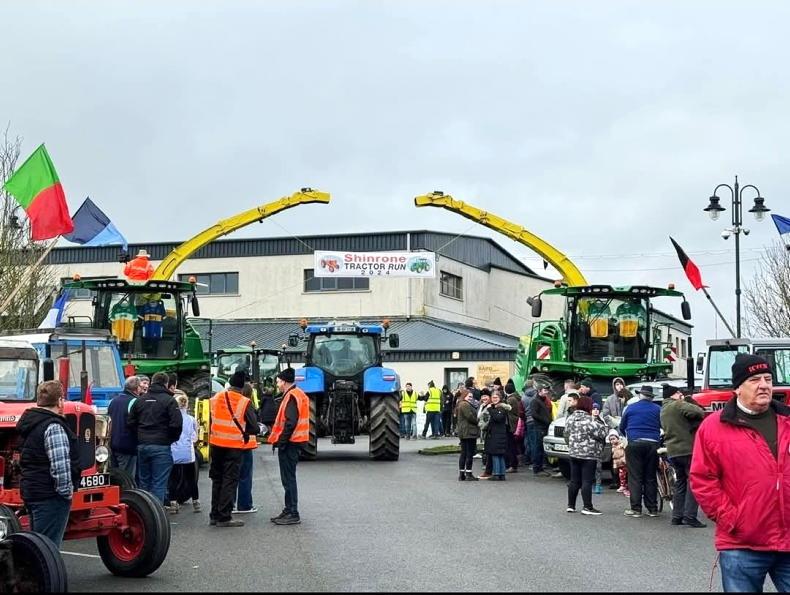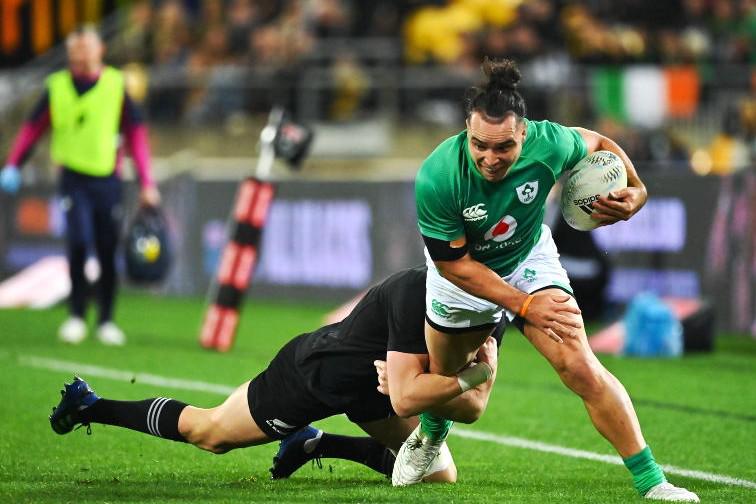In the garden of Eden, there was gender equality and on the rugby fields of Edenderry they hope to achieve the same.
While there was misfortune in that the 20x20 campaign’s push to promote women’s sport was heavily interrupted by the COVID-19 pandemic, those involved made sure to control the controllables.
Previously in these pages, we have spoken to Mary O’Connor, the chief executive of the Federation of Irish Sport, who outlined the various measures in which sporting organisations were challenged to improve. Edenderry RFC is one such example of a club making sure that real action trumps mere lip-service.
They have committed their aspirations around the promotion of their female teams and the integration of girls and women into a structured plan citing the 20x20 motto: ‘If she can’t see it, she can’t be it.’
A key aim is – when conditions allow spectators to attend games again – to host double-headers of male and female games
Laurie O’Brien, the club’s honorary secretary and PRO, hopes that such a move can attract new sets of eyes to the female game.
“We’re going to try to arrange double-headers at all ages,” she says.
“This would bring out a lot more supporters to the women’s matches and that would be great because it would give them so much more encouragement and show that people weren’t just coming out to watch the boys.
“Over the past few months, our numbers for the girls’ teams have risen dramatically, which is great.
“We’re hoping when supporters are allowed back and we run the double-headers, we’ll show everyone that we’re getting the girls up to the same levels as the guys.
“It’s just about giving them that support and the morale boost. Basically, what we are trying to do is bring women’s sport up to same level as men’s in terms of awareness.
“Women are equal to men – in all sports, not just rugby – but you can see that they don’t get the same levels of recognition and it has always been like that.
“Now, we have joined with the Federation of Irish Sport to push the 20x20 movement across the board and in Edenderry RFC that means making the girls’ presence as known as the men’s.”
Edenderry’s female section is still fairly young but it has grown quickly.
“Dave Wilkie started the women’s team about 12 years ago,” O’Brien says, “and it’s only in the last few years that we’ve had underage teams as well.
“We actually have girls from as young as five years of age coming out to us and we go the whole way up to adult level. There are U14, U16 and U18 teams as well as the women’s team.”
Even so, challenges remain in giving girls that push to throw themselves into it. Once they do that, O’Brien feels there is a strong chance of them sticking with the sport.
“We do find it very hard to recruit,” she says. “It’s often the case that the girls find that there is sport available to them but then when they come out, there are a lot more boys than girls at training.
“The thing is, once they get into it, then they can see that it doesn’t matter if you’re a girl or boy, it’s all about how much interest you have in it and how much heart you put into it, really. Our club community rugby officer, Gráinne Vaugh, goes into the schools in the locality to provide coaching and she’s constantly recruiting as she’s working.
“We’re coming at it from every angle. The girls are very good and there’s strong word-of-mouth and they bring their friends. A lot of the time, it’s about bringing them out once and then they’ll stick with it – one training session and that’s it.” CL
Hogan’s supreme skill puts Cats firmly in the frame for Liam
Richie Hogan’s goal for Kilkenny against Galway in Saturday night’s Leinster final was one of those magic moments.
Even after watching more than a few repeats, it’s hard to adequately describe how he did it, and yet it was executed in a matter of seconds. What made the goal even more impressive was its importance.
Often, players are willing to try moves like this when a win is secured but will go for a safer option when things are in the melting pot. However, Hogan’s intervention brought Kilkenny from a five-point deficit back to two and a second goal, from TJ Reid, just seconds later helped to complete a marvellous turnaround.
It is the Cats’ 16th Leinster title on Brian Cody’s watch and the manner of it must make it one of the most satisfying. While they are still behind Munster champions Limerick in the reckoning for the All-Ireland, a 12th Liam MacCarthy under Cody is far from out of the question.
The shortened GAA championship season, and lack of a back door in the football, has translated into a sort of a bottle-neck effect, with a lot of games on together in the early stages before the fixture-list thins out. So much concurrent action means that there is a danger of missing something, but when there is a piece of skill as sublime as Hogan’s, its diffusion is pretty much guaranteed.
At least it is when it comes in the top tier – we can’t say for certain that a goal that good would have received the same praise if it had been scored in the Joe McDonagh, Christy Ring, Nicky Rackard or Lory Meagher Cups.
While the highlights of the football championship – still illogically a single tier, though plans for a second division were deferred due to the COVID-19 pandemic – are carried on The Sunday Game, the same attention isn’t paid to the lower reaches of the hurling.
At the outset of 2020, when the second footballing tier, the Tailteann Cup, was set to be introduced, most observers would have expected Tipperary to feature.
In that scenario reaching the Munster final would have seen Tipp avoid such a fate, and to their benefit they were on the side of the draw that avoided both Cork and Kerry, with Clare being the favourites to advance.
However, Tipp beat them and then saw off Limerick after extra time a fortnight ago to set up a meeting with Cork. Now, on the same weekend that the centenary of Bloody Sunday is commemorated, the native county of Michael Hogan will mark it in special white and green jerseys, the same colours as those worn in 1920.
Incidentally, the 1920 All-Ireland football championship wasn’t completed until 1922 – having won Munster, Tipperary beat Mayo in the All-Ireland semi-final and then Dublin in the final. If they were to get over Cork, they would meet Mayo with Dublin likeliest to come through on the other side. It couldn’t happen – could it?









SHARING OPTIONS